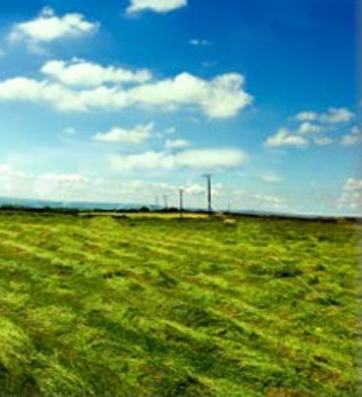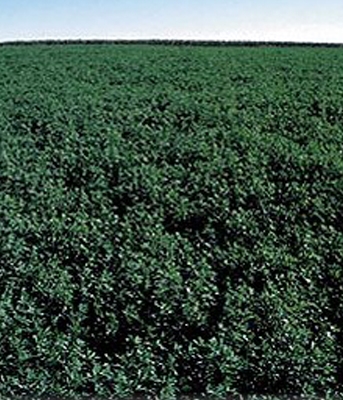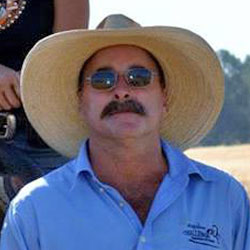Hay types and varieties, which hay is best for your horse. Types and availability vary depending on region, and hays are representative of the climate in which they were grown.
Grass hay types are divided into two categories based on where they are grown, cool or warm season. Cool season grasses include orchard, tall fescue, timothy, brome, rye and bluegrass. They grow mainly in areas with warm days and cool nights.
Warm season grasses include Bermuda, big bluestem, and teff. They grow in climates characterized by hot days and warm nights. Warm season grasses are becoming much more popular due to their low levels of nonstructural carbohydrates (consuming high levels of these sugars and starches can lead to conditions such as insulin resistance, laminitis, etc….), and digestibility that are similar to some cool season grasses.
Legumes (alfalfa) and cool season grasses require similar growing conditions. You generally see them growing in the same areas. Alfalfa is the most common legume owners feed their horses. A large majority of the hay grown in the United States is alfalfa or a grass/alfalfa mix.
Cereal grain hays include oat, barley, and wheat. The ideal cereal grain hay is one cut at a leafy stage, when the seedhead has not yet emerged. This hay will have good protein and digestibility. When cereal grain hay is harvested with seedheads fully extended, the main nutrients are in the actual grain and the rest of the hay is basically just straw and typically low-quality.
Cereal hays should be avoided with horses with EMS, Cushing’s, IR or sugar and starch sensitivities, as these forages are high in carbohydrates.


Cuttings
Normally the season’s first hay cutting offers the highest nutrients. This hay usually has a soft texture and is very leafy. Hays harvested later in the season usually have coarse, thick stems and fewer leaves than plants harvested early. The older the plant at harvest, the lower its nutrient value and palatability. Later cutting can still be a good choice for some horses such as easy keepers.
What To Look For Before Loading That Hay
- Hay free from dust, mold, and foreign objects. When horses sift through moldy or dusty hay, those irritants are released into the air and, when inhaled, can negatively impact a horse’s respiratory system. Foreign objects such as sticks, weeds, insects, and twine can also potentially harm a horse if ingested.
- A high leaf-to-stem ratio. Choose hay that contain a high proportion of leaves vs. stems and seed heads, the plant’s highest concentration of nutrients is in its leaves.
- Hay soft to the touch.
- A pleasant smell.
- A bright green color.
Which Hay Is Best For Your Horse?
Choose hay that is considered good quality for all ages and work levels of horses upon visual inspection.
Match the most nutritious hay to meet the nutritional need of the individual horse.
Easy Keeper Horses
Teff is an annual, warm-season grass that is fine stemmed and tends to thrive in warmer, drier conditions.
Compared to cool season grasses, teff tends to be higher in fiber and lower in nonstructural carbohydrates (NSC) and digestible energy (DE). Because of this, Teff is a great option for horse owners with “easy keeper,” overweight, or horses diagnosed with Equine Metabolic Syndrome (EMS), laminitis, Pituitary Pars Intermedia Dysfunction (PPID), or Polysaccharide Storage Myopathy (PSSM). These horses tend to require total diets lower in NSC and DE, making teff a desirable option.
Nutritional Values
Teff has higher amounts of fiber and lower amounts of nonstructural carbohydrates (NSC), digestible energy (DE), and crude protein (CP) compared to cool-season grasses and legumes.
The combination of higher fiber and lower NSC values have been reported to decrease the glucose and insulin response in horses. Maintaining a more level insulin response is thought to be desirable in horses diagnosed with metabolic diseases like EMS.
When harvested under ideal weather conditions and maturity, teff hay is described as fine stemmed and leafy. Like any forage, environmental conditions, maturity at the time of harvest and production practices can greatly impact forage quality.
Best Uses For Teff
Research on grazing teff and feeding it as hay confirms it can be used as a horse forage but is more suitable for horses with lower energy demands or horses prone to metabolic concerns.
While teff is known in the horse world as a forage for “easy keeping,” overweight, laminitic, or metabolically challenged horses, some horses may turn their nose up to it, holding out for a sweeter forage.
Horses With Higher Nutritional Needs
For those horses that need higher nutritional needs add a grain such as whole oats to the diet and of course, Equine Challenge Supplements to complete and balance the diet. Equine Challenge offers forage specific vitamin & mineral supplements to balance both alfalfa forage diets and grass forage diets. We also offer regional blends to include No Selenium added for forages grown where the selenium levels in the soils are high and for forages grown in the Southwest, we have your horses covered there also. If you have questions as to which Equine Challenge Supplement will best meet the needs of your horse, please contact us at 559-905-7528 or email at kathy@equinechallengesupplements.com
Kathy Hartwig

